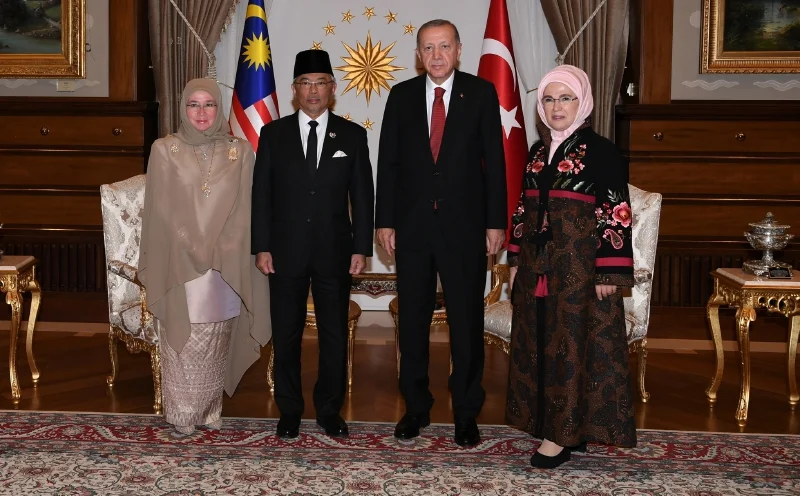In the midst of the Covid-19 pandemic and a less publicised event, both Australia and Malaysia have elevated their Strategic Partnership to the highest level with the launching of the Comprehensive Strategic Partnership (CSP) on 27 January 2021. There are many areas that the CSP can benefit both countries such as in agriculture and food security, defence cooperation and disaster and public health emergencies. This article will look deeper into Australia and Malaysia’s defence cooperation and CSP’s potential spinoffs.
Australia’s defence cooperation with Malaysia has a long history. Australian forces had fought against the Japanese forces in Malaya during World War II, conducted counter-insurgency (COIN) operations in the Malayan Emergency (1948-1960), and defended Malaysia during the Indonesia-Malaysia Konfrontasi (1963-1966). Australian military units continued its physical presence in Malaysia with the start of the Five Powers Defence Arrangements (FPDA) in 1970. Throughout the decades of close defence partnership with Australia, Royal Australian Air Force (RAAF) combat aircraft were based in Butterworth which included the CAC Sabres, Dassault Mirage IIIs and more recently the AP-3C Orion Maritime Patrol Aircraft. Australia also has an infantry unit based at Butterworth known as the Rifle Company Butterworth. Additionally, under the FPDA platform, an Integrated Air Defence System (IADS) was also set up to provide air defence radar coverage and command and control network for Peninsular Malaysia and Singapore. The RAAF also runs Operation Gateway from Butterworth to conduct maritime surveillance operations since 1981.
Malaysia serves as an important forward basing location supporting Australia’s forward defence policy. Australia is a large continental island with a small population of about 25 million people. It will be difficult for Australia to defend its large territory and rather than having an enemy approach close to Australia’s shores, as experienced during the Second World War, Australia’s defence strategy entails it to deter and defeat threats at forward geographical locations. Australia also has strong economic engagements with the Southeast Asia region and ASEAN, as a bloc, is the second largest trading partner with Australia. It is also an active dialogue member of ASEAN Defence Ministers’ Meeting Plus (ADMM+). Hence, Australia’s multilateral and bilateral relationships with the Southeast Asia region, and especially with Malaysia, provides the strategic backdrop to an important geographical strategic bastion strategy.
The CSP is also expected to benefit Malaysia in a few strategic ways. For a start, the presence of Australian troops and air power assets in Malaysia serves as an important deterrent for would-be aggressors to Malaysia. The joint training and cross posting of military officers in both countries’ defence forces provide important experience and training for both militaries.
Malaysia may also benefit with better intelligence sharing by Australia in key security issues. Australia is a member of the Five-Eyes intelligence grouping and has substantial capabilities in intelligence gathering. Another key area for joint capability development is cyber warfare. Under Australia’s 2020 Defence Strategic Update, Australia plans to spend AUD$15 billion over the next decade to upgrade its information and cyber capabilities. Similarly, Malaysia in its 2019 Defence White Paper has also stated that the MAF wants to develop cyber electromagnetic capabilities. Joint development, training and sharing of technology in the cyber domain between these two countries is a possible future strategic option under the new CSP.
Australia has a naval presence in the South China Sea to ensure the international ‘rules-based order’ is respected. Malaysia shares similar vision and value. Australia’s support of the ‘rules-based order’ will enhance Malaysia’s own capacity and interest in safeguarding Malaysia’s territorial waters, exclusive economic zone (EEZ) and continental shelf subscribing to UNCLOS rulings, and with Australia as a strategic partner to jointly monitor the South China Sea to prevent and deter ‘un-UNCLOS-like’ behaviour.
With the CSP, both Malaysia and Australia can continue to develop joint military capabilities to conduct humanitarian relief operations under the ASEAN+ HADR exercises and also within the FPDA platform. These joint humanitarian operations will enable both Australia and Malaysia to conduct rapid HADR operations in the region when there is an emergency.
These are some potential areas in the defence sector that both Australia and Malaysia can cooperate and develop within the enhanced CSP and should be able to yield handsome strategic utility. These two middle-powers have a long shared strategic history, shared strategic and security interests, and shared values, and will surely continue to build a strong and mutually beneficial relationship in the future.


